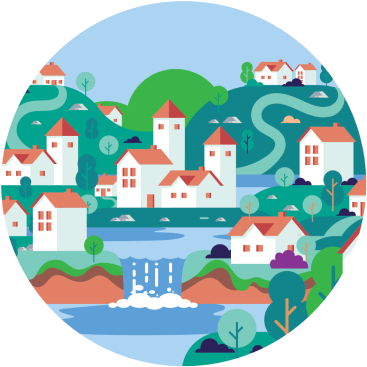
Essere un passo avanti al sovraffollamento turistico: Come salvare le destinazioni
Il sovraffollamento turistico è un problema in crescita nelle città come Venezia, Barcellona e Amsterdam, dove la vita locale e le infrastrutture vengono sopraffatte dal turismo durante l’alta stagione. Mentre queste città affrontano sovraffollamenti e pressioni sulle infrastrutture, paesi come il Giappone e il Portogallo hanno gestito i flussi turistici in modo più efficace—almeno per ora.
Tuttavia, con il numero di turisti in continuo aumento, anche queste destinazioni devono adattarsi per evitare un destino simile.
Il problema dell’alta stagione
Il problema principale in molte città colpite dal sovraffollamento turistico non è solo il numero di visitatori, ma anche la loro concentrazione durante l’alta stagione.
Venezia accoglie circa 20 milioni di turisti all’anno, a fronte di una popolazione di soli 50.000 abitanti. Durante i periodi di punta, il rapporto turisti-abitanti può superare i 400 a 1, causando problemi di sovraffollamento e impatti ambientali.
Barcellona affronta sfide simili: ogni anno, 12 milioni di turisti visitano una città di 1,6 milioni di abitanti, con un rapporto di 7,5 a 1. In estate, le strade e i servizi sono fortemente congestionati. Entrambe le città hanno introdotto tasse di soggiorno e stanno considerando ulteriori regolamenti, ma il problema persiste: i visitatori dell’alta stagione continuano a esercitare una pressione insostenibile sulle infrastrutture.
Promuovere il turismo fuori stagione: è sufficiente?
Il Giappone e il Portogallo hanno distribuito meglio i visitatori durante tutto l’anno. Finora questa strategia ha funzionato, ma rimangono delle sfide.
-
Il Giappone, in particolare Kyoto, ha promosso eventi fuori stagione per ridurre la pressione, ma il crescente numero di turisti resta una sfida. Sebbene Tokyo abbia un rapporto turisti-abitanti di 1,1, città più piccole come Kyoto risentono maggiormente dell’impatto.
-
Il Portogallo promuove il turismo tutto l’anno, soprattutto a Lisbona, grazie a eventi culturali e festival. Tuttavia, la crescente popolarità e il sovraffollamento estivo mettono a dura prova le infrastrutture e i servizi pubblici.
Questo dimostra una lezione importante: nessuna destinazione è immune dal sovraffollamento turistico. Anche il Giappone e il Portogallo devono continuamente adattare le loro strategie per affrontare le sfide future.
Soluzioni tecnologiche per una gestione turistica più intelligente
Un modo per gestire meglio il turismo è attraverso prezzi dinamici per le tasse di soggiorno. Adeguando le tariffe in base alla domanda, le destinazioni possono attrarre visitatori durante la bassa stagione e alleggerire le infrastrutture durante l’alta stagione. Un’altra soluzione è l’introduzione di quote turistiche, che limitano il numero di visitatori nelle aree popolari durante i periodi di punta. Queste quote possono essere regolate dinamicamente utilizzando dati in tempo reale per mantenere un equilibrio tra capacità di accoglienza e esigenze locali.
Un vantaggio strategico: imparare dagli altri
Alcuni sostengono che il Giappone e il Portogallo siano solo pochi anni indietro rispetto a Venezia e Barcellona e che affronteranno gli stessi problemi. Tuttavia, questo rappresenta un vantaggio strategico. Hanno l’opportunità di imparare dagli errori di altre città e di agire prima che il sovraffollamento turistico diventi una crisi. Attraverso misure proattive come prezzi dinamici e quote, il Giappone e il Portogallo possono gestire la crescita del turismo in modo sostenibile. Così facendo, evitano i sovraffollamenti estremi visti a Venezia e Barcellona, beneficiando al contempo degli aspetti economici del turismo.
Il momento di agire è ora. Il turismo sostenibile richiede politiche lungimiranti e adattive per continuare a prosperare.




